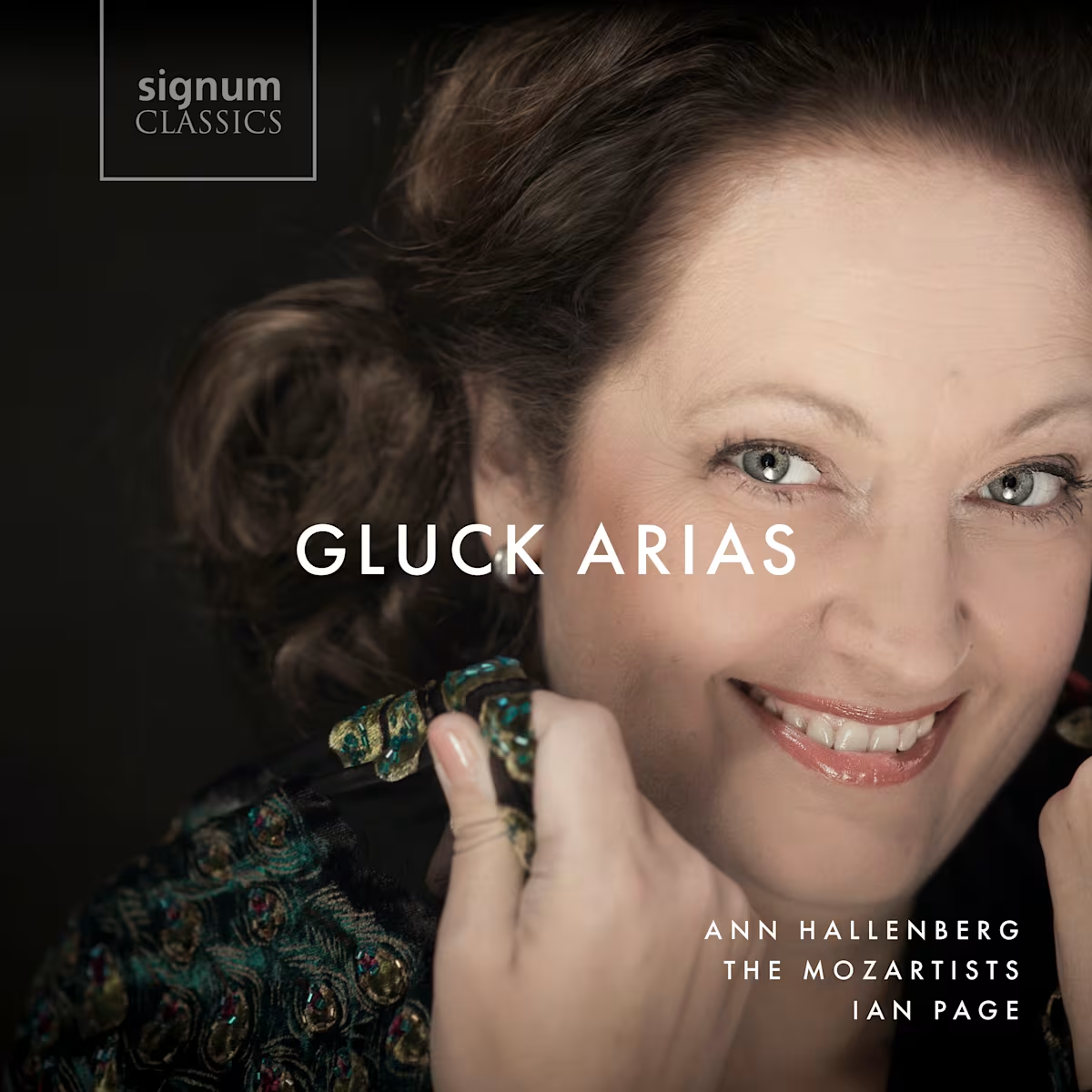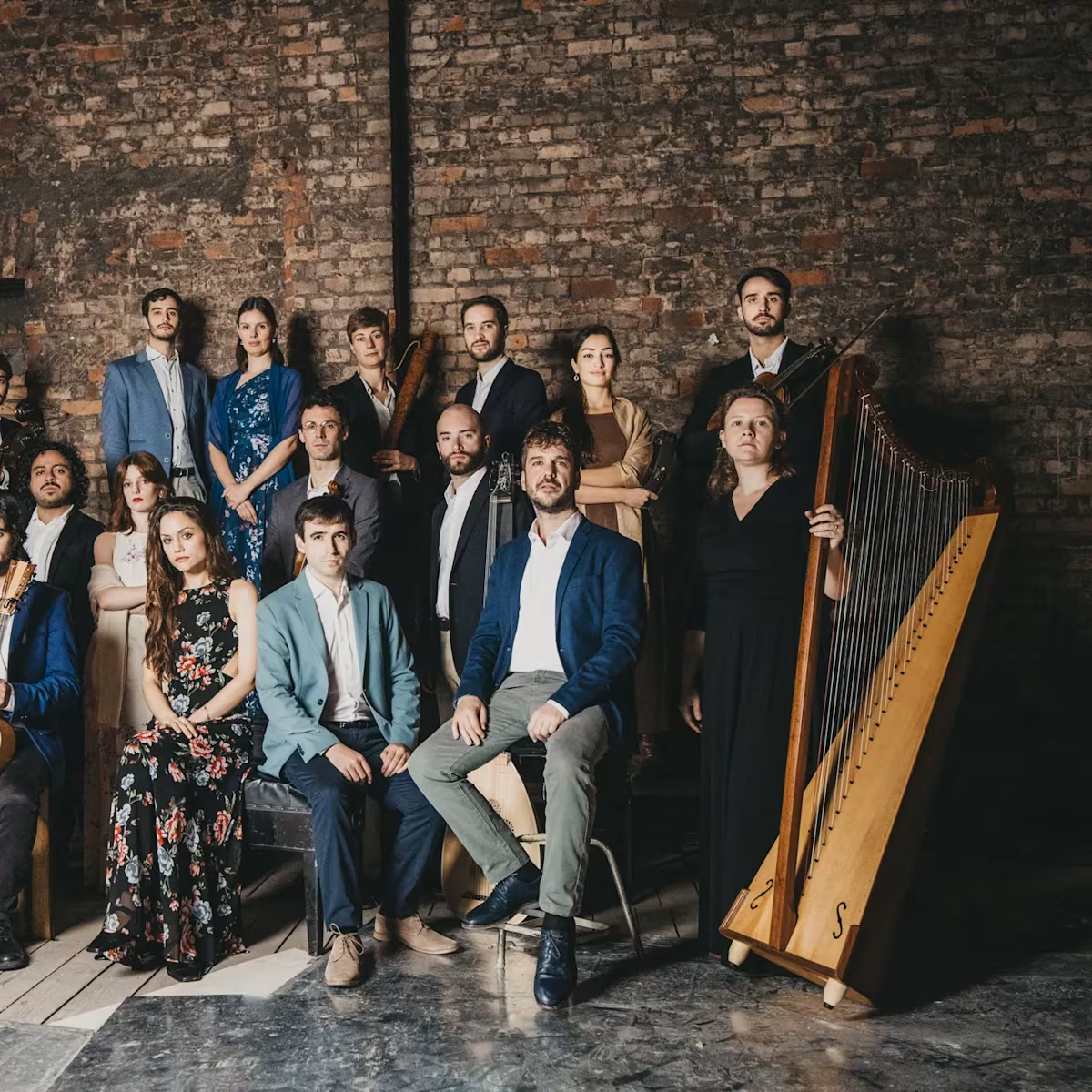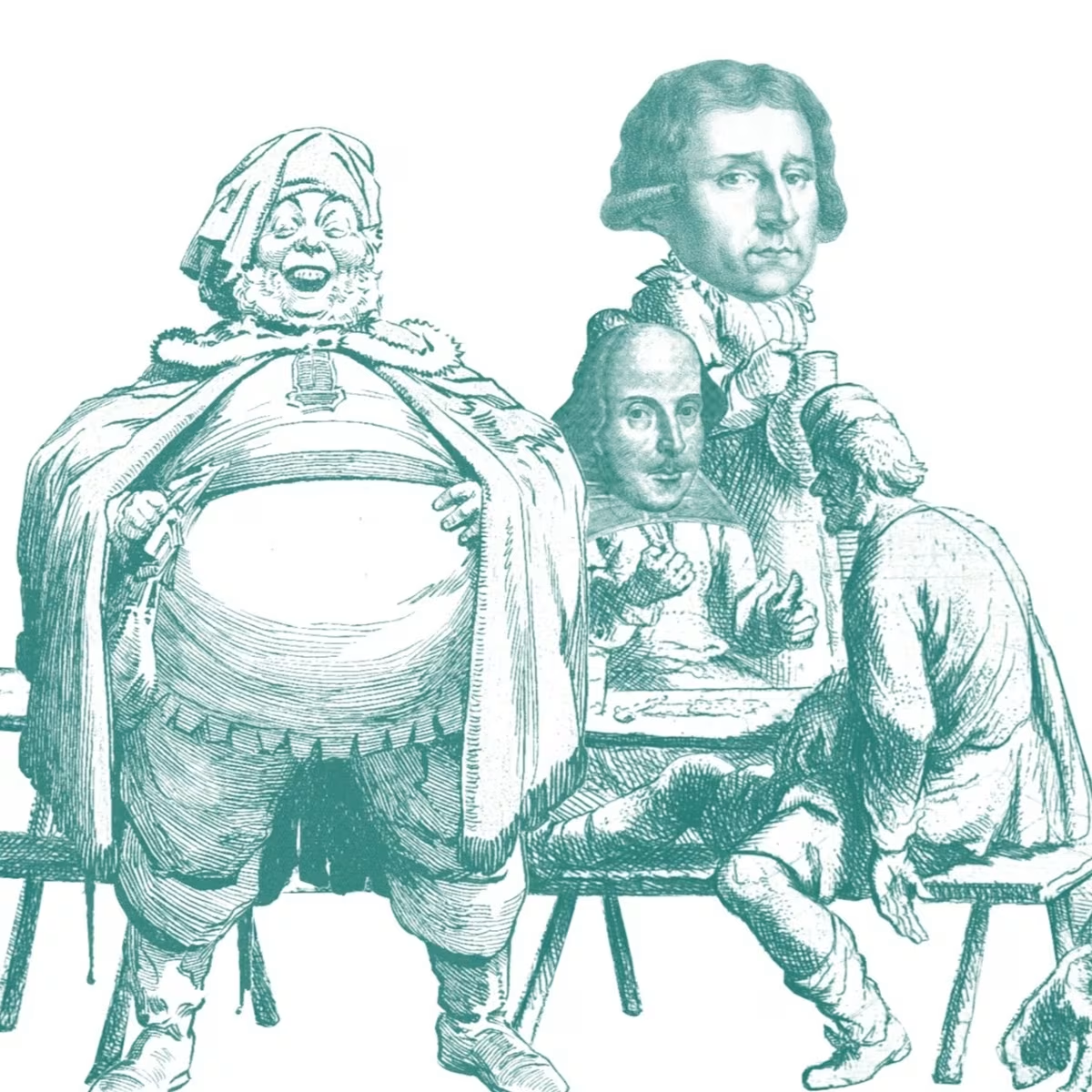Recording
The King's Playlist
Share this

Ensemble Molière is celebrating the release of their debut album, ‘The King’s Playlist’, a luxuriant and varied selection of French baroque music that accompanied King Louis XIV in his daily life. The recording represents the culmination of ten years of work as an ensemble; of projects, research and creativity, but most importantly, a shared passion for this stunning repertoire. Violinist Alice Earll tells us more:
The King’s Playlist was originally conceived as a concert programme during our time as the first BBC New Generation Baroque Ensemble. We have always enjoyed programming and researching new projects, but it was this scheme that gave us the opportunity and support to focus exclusively on French baroque music. During our research we came across the compositions of Michel Richard Delalande (1657 - 1726) and the Simphonies pour les soupers du Roy (Symphonies for the King’s Dinners) immediately captured our imagination. The decadence of the composition juxtaposed with the functionality of this work inspired us to reimagine the spectacular music that acted as a soundtrack for King Louis XIV’s life.
Whilst we wanted the disc to be enjoyed as a musical re-creation of a day in the life of King Louis XIV, we also wanted it to be a celebration of his impact on the arts, as a patron, a dancer and a source of cultural inspiration. Jean-Baptiste Lully (1632 - 1687) is a notable example of the impact King Louis XIV had on the arts during this period. He became known to the King in 1653, reportedly catching his eye during a performance of Ballet de la Nuit in which both men danced. Lully went on to redefine the French style and amassed numerous royal positions, becoming the King’s Master of Music in 1661. Phaëton premiered in 1683 at the height of Lully’s popularity. As was common at the time, the opera drew on Greek mythology and paid homage to the King with allegory and flattery. Louis XIV chose to portray himself as the Sun, or Le Roi Soleil (The Sun King), the ultimate power which gives life to all things. As such, Phaëton can be read as an allegorical depiction of the punishment awaiting those mortals who dare to raise themselves as high as the ‘sun’.
Marc-Antoine Charpentier (1643 - 1704) was more of an outlier at the King’s court, having instead spent many years in service to Mademoiselle de Guise, a first cousin of Louis XIV. It was during this time, under the protection of Mlle de Guise, that Charpentier wrote and, more unusually, performed many of his chamber operas in obvious defiance of the monopoly that Jean-Baptiste Lully held over this genre. Written in 1685, Les Arts Florissants is a short chamber opera in five parts about the eponymous Arts, shown flourishing under the magnificent and peaceful reign of Louis XIV. As such, it seemed an appropriate and glorious opening movement for this programme.
It was the titled collections from François Couperin (1668 - 1733) and Marin Marais (1656 - 1728) that formed the backbone of the repertoire for this programme. Both the Concerts Royaux and Trios pour le coucher du Roy were composed for the King, for his private chamber and for the bedchamber respectively, and are collections of instrumental works that allowed us to select the most apposite movements and to employ a variety of instrumental combinations.
The Ballet Royal de la Nuit is an example of a spectacular court ballet, divided into four parts described as veilles (watches), each representing a period of the night; it was said to have taken 13 hours to perform from dusk to dawn. Both the Ouverture and Recit de la Nuit: ‘Languissante clarté, cachez-vous dessous l’onde’ (Languishing light, hide yourself beneath the billows) from the first veille revel in the darkness of night, but it was the culmination of the fourth and final veille that carried the true message. In the final extract Le Roy représentant le Soleil levant (The King representing the rising sun), Apollo, danced by the 14 year old Louis XIV, banishes the spectre of gloomy night as dawn arrives. It is some of the most moving music on the disc and an ensemble favourite.
As musicians specialising in Historical Performance, research and history are a key part of our programmes, but as contemporary performers it is equally vital to find relevant and interesting ways to bring these narratives to modern audiences. When toying with the idea of taking audiences through a day in the life of King Louis XIV, we were immediately reminded of a stunning performance of François Couperin’s Trois Leçons de Ténèbres given by Christophe Rousset and Les Talens Lyriques in 2018. This particular piece was intended to be performed in church as part of a religious service called Tenebrae and on this occasion Rousset had filled the stage with candles, which were extinguished one by one as the piece came to a close. Not only was this a direct reference to the ritual within the religious ceremony, but it also communicated the passing of time, creating a profound sense of atmosphere and was a simple yet powerful way of communicating the sense and functionality of this piece to the audience. The impact of this staging has remained with us to this day, and was something we took great joy in incorporating into this programme with the use of bespoke lighting programmes and decreasing instrumentation throughout the final suite. The programme closes with the harpsichord alone, striking a single note and switching off the final light as the King finally falls asleep at the end of the day.
Another element we worked into the programme was the use of spoken word in the form of verse. As a musician, it is sometimes easy to forget the impact of speaking to your audiences but it is a powerful tool to engage directly with the people in front of you, both to communicate your chosen narrative and also something of yourself as well. The lines of verse that are interspersed between each piece, which have been included in the CD liner notes, provided a way to strengthen the narrative of the programme and add to the drama of the concert experience. It is always a joy to flex one's creative muscles in different ways, and I always appreciate the opportunities the ensemble provides me with to write in a number of different styles. The verse felt important to anchor the narrative of the programme but also a good opportunity to reference the beautiful lyrics from the recitatives we have arranged. It was also a challenge for us as an ensemble to work on our stagecraft in a more intentional and dramatic way, including choreographing page turns, holding the silence on stage and working on our declamation skills! With the help of Fran Acheson from BBC Academy we worked on our speaking and delivery and found more effective ways of communicating with our audiences whilst having great fun declaiming to each other in full voice during our rehearsals!
Released from the depths of a Stygian night; le roi soleil is woken, bathed in glorious light.
A burnished sky flecked with gold and red; a fiery intensity that draws him from his royal bed.
A luminous warmth suffuses his chambers; as the mortals go about their labours.
Before a grand audience, the supper he savours; the courtiers line up awaiting their favours.
For he is Apollo and when he descends; all are in awe as worldly arts he transcends.
Make way for the loveliest Night of the world; approaching with great strides until wholly unfurled.
We are always excited to work with other artists across a wide range of disciplines and have previously collaborated with animators, writers, dancers and even clowns in other projects over the years. This time we saw a wonderful opportunity to add a visual element to The King’s Playlist and commissioned the illustrator Gisela Gayleard to create the beautiful cover art for our debut CD. Gisela captured the spirit of our ensemble, accommodating requests to work in drawings of our instruments alongside creating a beautiful image of King Louis XIV for listeners to have in their mind's eye.
From a practical standpoint, The King’s Playlist is also a celebration of individual talents within the ensemble. Without the compositional skills of Satoko Doi-Luck we wouldn’t have the glorious arrangements of the Charpentier and Lully, nor the recreations of the Delalande and Ballet de la Nuit. The latter only survive in incomplete manuscripts and required Satoko to compose the missing parts and arrange them to suit our unique instrumentation. It is an honour to work with a musician that not only has the skill to do this, but also the consideration to compose parts to suit us as individual musicians, bringing to light our strengths and working around our difficulties! The programme also gives us plenty of opportunity to explore the various instrument combinations our ensemble allows us; from the hypnotic Rondeau featuring bassoon, viola da gamba and harpsichord in the Marais to the foot-tappingly perky piccolo solo in the Delalande.

We were delighted to bring this project to life with the help of Linn Records, BBC Radio 3, the National Centre for Early Music, the Royal College of Music and the continued support of Continuo Foundation, alongside the individual supporters of the ensemble. The album is available here.
This project was supported by a grant from Continuo Foundation
Supported by Continuo Foundation
Share this
Keep reading

Gluck Arias | Ann Hallenberg with The Mozartists & Ian Page
Ian Page and The Mozartists’ latest recording for Signum Classics features a programme of Gluck arias sung by celebrated Swedish mezzo-soprano Ann Hallenberg.

Cantoría | ‘A la fiesta, zagales’: Spanish Baroque at Wigmore Hall
Cantoría leads listeners into a vibrant Spanish festive world filled with the joyful energy of Baroque villancicos, carols, jácaras and dances.

Falstaff, friends and home-made focaccia
Continuo’s Writer-in-Residence Simon Mundy meets Nicola Barbagli of the Istante Collective to talk about Salieri, Lebrun, and ten years of Baroquestock.


